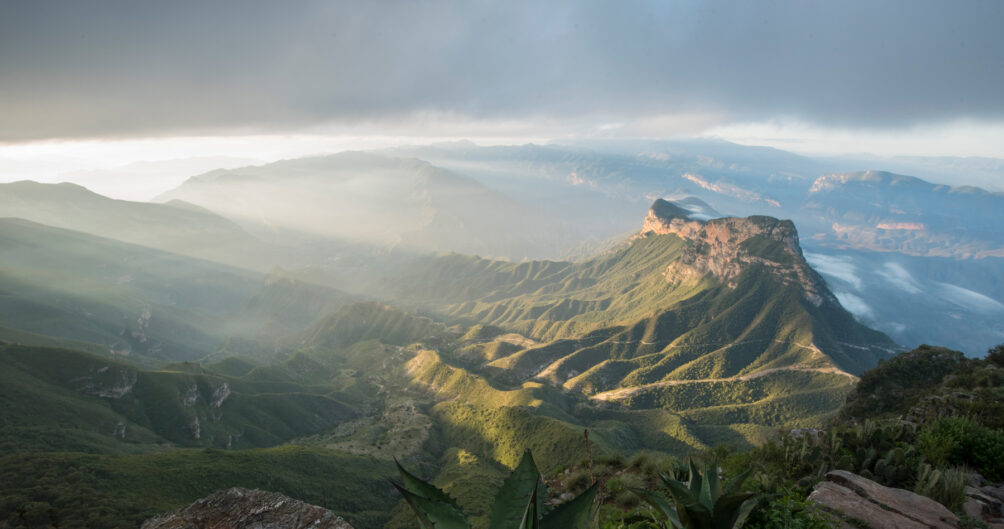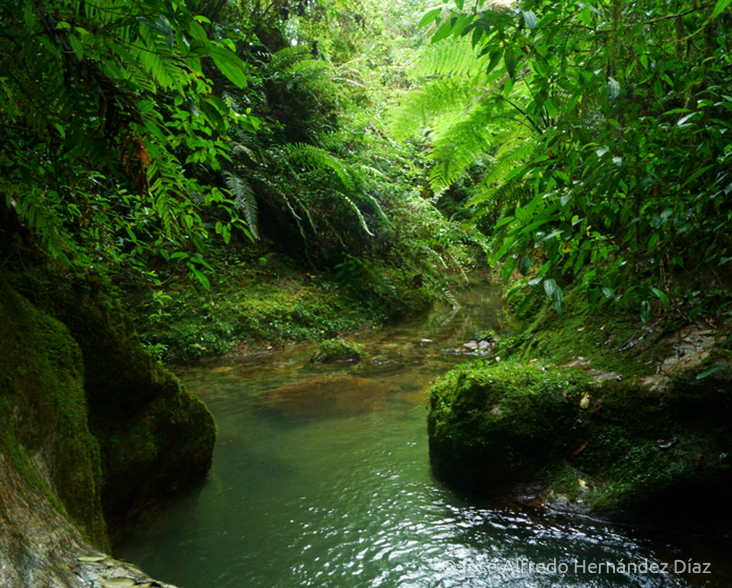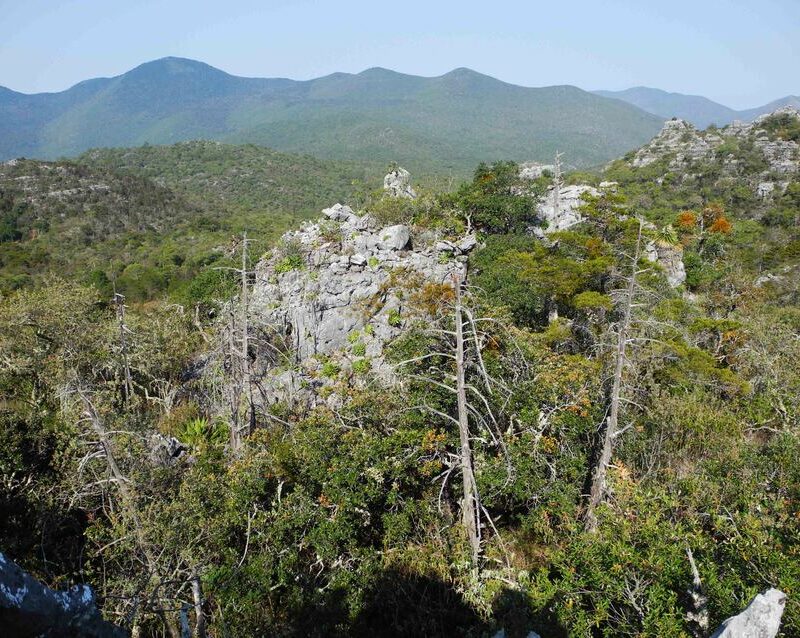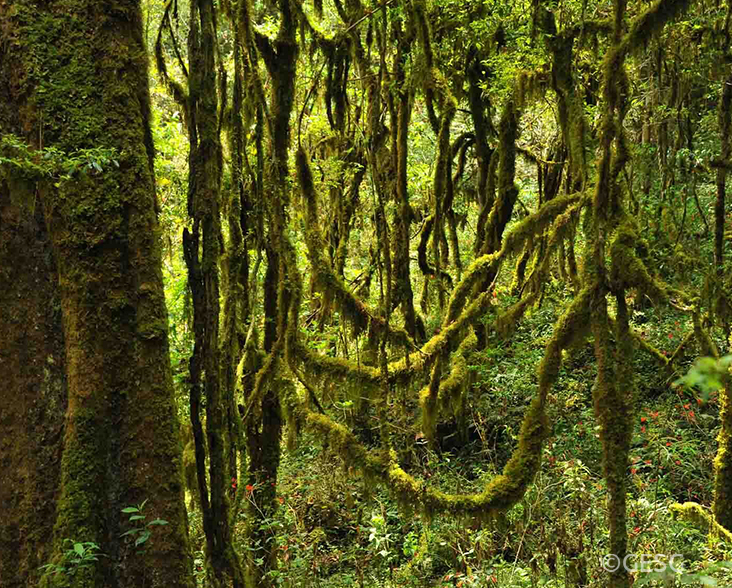Mexico is the third largest country in Latin America and hosts an impressive diversity of landscapes, ranging from grasslands and temperate forests to mangrove swamps, alpine ecosystems, and coral reefs. Its arid deserts and scrubland in the north and north-central regions host iconic species, such as the Sonoran Desert which holds the greatest diversity of vegetative growth of any of the world’s desert ecosystems and is the only place in the wild where the famous saguaro cactus (Carnegiea gigantea) grows. Mexico is also the only native home to the iconic, yet Critically Endangered Axolotl.

MEXICO
Years of Support 0
HECTARES FUNDED 0 (35,378 acres)
Whilst notable for its dry ecosystems, the tropical rainforests of the Yucatán Peninsula are home to an abundance of Mexico’s endemic species, including the Yucatán Spiny-tailed Iguana. The country is home to several mountainous regions too, including the Sierra Madre Oriental mountain range; iconic for its steep mountains and deep canyons. This range incorporates the Sierra Gorda Biosphere Reserve and its exceptional variety of species and ecosystems.
Its diverse physical geography and climate makes Mexico one of the world’s 17 megadiverse regions. Between 10 and 12% of the world’s species can be found in its territory. The Gulf of California is home to a third of the world’s cetacean species, including the Vaquita — the most endangered porpoise. The country also ranks third highest in the world of mammal diversity and out of its 864 reptile species, 45% are endemic. Mexico also has a rich cultural heritage and is home to 68 Indigenous Peoples.
Our Partners in Mexico
Current Projects in Mexico
Cuetzalan Cloud Forest Amphibian Sanctuary
Sierra Gorda Biosphere Reserve
Xilitla
Cuetzalan Cloud Forest Amphibian Sanctuary
The Cuetzalan Cloud Forest Amphibian Sanctuary is the first WLT-supported project led by our partner Conservación de Anfibios in Cuetzalan, Puebla. Established in 2022, the Sanctuary will involve the planned purchase of eight hectares of land with WLT support and constitutes the first protected area in the region. This project is concerned with vital forest habitat for the Critically Endangered Cuetzalan Salamander which has already been reduced to 32% of its original size. The project will also protect other important globally threatened species such as the Large-crested Toad, Xicotepec Salamander, Veracruz Green Salamander and two undescribed species of plethodontid salamanders which have only been recorded in this region.
WLT are also providing support within the new Sanctuary by funding two reserve rangers.
The cloud forest faces ongoing threats from the advancement of agricultural frontiers as well as an increase in urbanisation which leads to deforestation. A lack of monitoring and formal protection schemes for natural areas has also led to an increase in illegal logging and mining.


Sierra Gorda Biosphere Reserve
Since 2007, WLT has been supporting Grupo Ecológico Sierra Gorda (GESG) to expand its network of managed reserves within the Sierra Gorda Biosphere Reserve Biosphere Reserve. In 2020, the area of forest reserves under GESG’s protection totalled over 7000 hectares.
Situated in the state of Queretaro, the Reserve covers an area of more than 383,000 hectares and is one of Mexico’s most eco-diverse regions. Notably, it is the country’s richest area for mammal diversity with all six cat species found in Mexico being found there (Jaguar, Puma, Bobcat, Margay, Ocelot and Jaguarundi). It is also home to around 30% of Mexico’s total butterfly population and is an Important Bird Area (IBA), providing habitat for the globally threatened Bearded-wood Partridge (Dendrortyx barbatus, VU) and Red-crowned Amazon (Amazona viridigenalis, EN), and the world’s second smallest bird, the Bumblebee hummingbird (Atthis heloisa).
Much of the land inside Sierra Gorda Biosphere Reserve is in private ownership and faces threats from expanding agricultural frontiers for cultivation and livestock grazing. Illegal logging persists in higher elevation forests and the overall management of the forest is also faced with the effects of the climate crisis. Recent droughts and low rainfall seasons have significantly elevated the risk of catastrophic forest fires to which the cloud forests are not adapted.
WLT supports the protection and expansion of a network of reserves owned and managed by GESG. This project also includes funding for rangers and fire management, and the creation of forest corridors linking the reserve areas to privately owned land through a payments for ecosystem services scheme.
Xilitla
Implemented by Grupo Ecológico Sierra Gorda (GESG), this project will protect the temperate and cloud forests of Sierra de Xilitla from significant threats posed by forest fire and timber harvesting by establishing high-quality, community-based forest management within the Ejidos. Ejidos is a traditional indigenous system of land tenure that combines communal ownership with individual use.
The project area is located high in the Sierra Madre Oriental mountains adjacent to the Sierra Gorda Biosphere Reserve and is comprised of Temperate forests, above 1,800 metres above sea level, and are extremely biodiverse. This forest region, dominated by oaks, pines and cypresses, and stores high amounts of carbon and has a significant role in cloud formation, influencing the area’s high rainfall patterns whilst regulating the rivers and streams that are critical to life in the Huasteca Potosina.
Funding for forest protection will be derived from voluntary payments for carbon offsetting as a result of natural forest regeneration sequestering 13,800 tonnes of CO2e annually.

